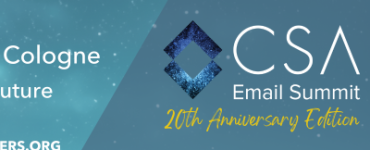- Recipient responses feed into spam evaluation in real time, according to the Certified Senders Alliance (CSA)
- The reputation of the sender and the relevance of the content are of importance
Spam filters increasingly check incoming emails more restrictively by means of reported reactions of recipients. “Once the first receivers in a campaign delete the unread email or mark it as spam, it is quite likely that the remaining messages won’t reach their addressees,” says Julia Janßen-Holldiek, CSA Manager Business Development & ISP Relations. “The easiest approach for emails to find their way to the recipient’s inbox is if the sender consistently focuses on interesting content, and does not try to outwit the respective spam filters.” The CSA recommends sending the best possible email, and proving its authenticity on the basis of email authentication protocols like DMARC.
Scoring systems support spam evaluation
To assess whether an email might possibly be considered as spam, scoring systems bring together a range of factors. What is important is the reputation of the diverse IP addresses and sender domain, and external reputation data are often used, including blacklists of IP addresses or the CSA whitelist, to ascertain this. Once an IP address is known (or identified) as being the source of spam, then the receiver is likely to send an error-code back or even refuses the connection.
It is therefore important for an email sender to keep an eye on the reputation of its email server. To improve the quality of their own mailings, many brands work together with email service providers (ESPs), instead of sending the emails themselves. The ESP is then responsible for the reputation of the sender’s IP-address.
Receiver reactions recorded in real time
For their spam evaluation, modern scoring systems also include user engagement, meaning the direct reactions of the receiver to an email. It is tough for mailings if similar campaigns in the past have been badly received.
Besides the technical spam protection, the content must be interesting and relevant for the final receivers. Therefore many spam filters analyse the content of emails by means of word filters. What is positively evaluated is a clear structure and a balanced text-image ratio. Among other things, the reputation of interlinked web addresses and the attachments are also considered for the evaluation, as well as a scan for viruses and malware.
CSA Summit: 11 & 12 May 2017 in Cologne
Current challenges regarding spam protection will be also subject of discussion at the CSA Summit on 11-12 May 2017. Here, brands will discuss sector developments and future strategies with email service providers (ESPs) and Internet service providers (ISPs).
Find more information about the CSA Summit 2017 at: summit.certified-senders.eu

-
Engineering Manager CSA - Ansprechpartner E-Mail Alexander Zeh +49 (221) 7000 48 - 171 alexander.zeh@eco.de



